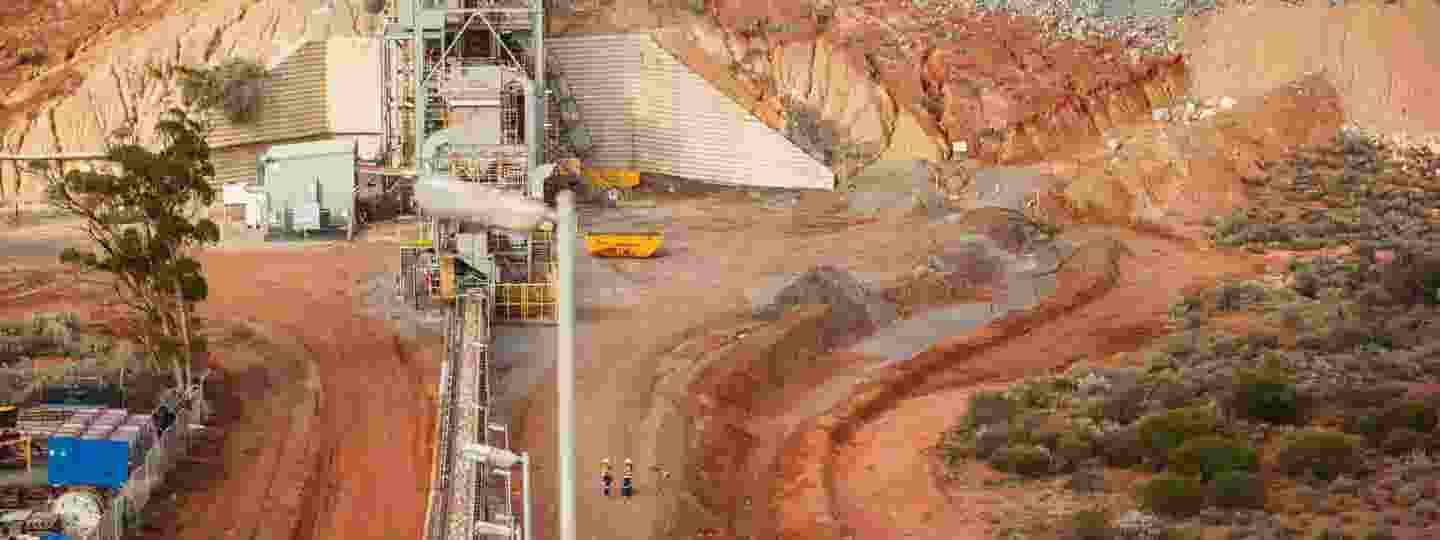New technology captures more carbon dioxide than a forest the size of Germany
0.5% of global carbon emissions could be captured during the crushing process of rocks used in construction, by crushing them in CO2 gas.

[Mar. 14, 2023: Lynn McPherson, University of Strathclyde]
The materials and construction industry accounts for 11% of global carbon emissions. (CREDIT: Creative Commons)
New research suggests that around 0.5% of global carbon emissions could be captured during the normal crushing process of rocks commonly used in construction, by crushing them in CO2 gas.
The paper ‘Mechanochemical processing of silicate rocks to trap CO2’ published in Nature Sustainability says that almost no additional energy would be required to trap the CO2. 0.5% of global emissions would be the equivalent to planting a forest of mature trees the size of Germany.
The materials and construction industry accounts for 11% of global carbon emissions. More than 50 billion tonnes of rock is crushed worldwide every year and current crushing processes - standard in construction and mining – do not capture CO2.
Rock powders
Previous work has explored trapping carbon into single minerals by the same method, but the research at the University of Strathclyde shows this is unstable and dissolves out of the mineral when placed in water. The paper documents how a larger proportion of carbon dioxide can be trapped in a stable, insoluble form in rocks composed of multiple different minerals by grinding it in CO2 gas. The resulting rock powders can then be stored and used in the environment for construction and other purposes.
Related Stories
The calculation of 0.5% was made for Norway, as an example, because the country publishes annual data on the volume of hard rock aggregate produced for their construction industry, and their annual national CO2 emissions are also documented.
Principal investigator Professor Rebecca Lunn, from the Department of Civil & Environmental Engineering, said: "The hope is that the sector could reduce the emissions by adapting the current setups to trap carbon from polluting gas streams such as those from cement manufacture or gas-fired power stations."
“The global estimate is based on the assumption that Norway’s construction industry is reasonably typical. Some countries such as Australia and South Africa will actually produce far more, as they have large mining industries and will look to crush and sell the waste rock, while others may be less.
Carbon captured by mineral composition. (CREDIT: Nature Sustainability)
“If the technology was adopted worldwide in aggregate production, it could potentially capture 0.5% of global CO2 emissions - 175 million tonnes of carbon dioxide annually. Future research can pin this down, as well as optimise the process to trap more carbon.”
Crushing technique
Co-investigator Dr Mark Stillings said: “Now we know that CO2 trapping in most hard rock can be done in a lab, we need to optimise the process and push the limits of how much can be trapped through the crushing technique. We then need to understand how this process can be scaled up from the lab to industry, where it can reduce global CO2 emissions.
Rock and mineral leaching results. (CREDIT: Nature Sustainability)
“If this process was applied, the CO2footprint associated with building houses and public infrastructure could be greatly reduced, helping to meet global objectives to combat climate change.”
As part of the Paris agreement, countries around the world agreed to pursue efforts to limit global warming to well below 2 degrees Celsius, preferably to 1.5 degrees Celsius, compared to pre-industrial levels.
To achieve this, countries must reduce their greenhouse gas emissions to ‘net zero’ by around 2050.
Professor Lunn added: “There are many industries for which there is currently no low carbon solution and this research will allow direct gas capture of CO2 from hard to decarbonise industries, where a solution is not going to exist by 2050.”
“In the future, we hope that the rock used in concrete to construct high rise buildings and other infrastructure such as roads, bridges and coastal defences will have undergone this process and trapped CO2, which would otherwise have been released into the atmosphere and contributed to global temperature rise.”
The work was part-funded by the Engineering and Physical Sciences Research Council’s (EPSRC) Doctoral Training Awards Grant. EPSRC is part of UK Research and Innovation (UKRI).
Dr Lucy Martin, EPSRC’s Deputy Director for Cross Council Programmes said:
"This breakthrough research from the University of Strathclyde, which EPSRC has proudly played a part in funding, is truly revelatory. It points to a new process for the construction industry that could significantly reduce global carbon emissions and help us meet our net zero goals".
For more green news stories check out our Green Impact section at The Brighter Side of News.
Note: Materials provided above by University of Strathclyde. Content may be edited for style and length.
Like these kind of feel good stories? Get the Brighter Side of News' newsletter.
Joseph Shavit
Head Science News Writer | Communicating Innovation & Discovery
Based in Los Angeles, Joseph Shavit is an accomplished science journalist, head science news writer and co-founder at The Brighter Side of News, where he translates cutting-edge discoveries into compelling stories for a broad audience. With a strong background spanning science, business, product management, media leadership, and entrepreneurship, Joseph brings a unique perspective to science communication. His expertise allows him to uncover the intersection of technological advancements and market potential, shedding light on how groundbreaking research evolves into transformative products and industries.



